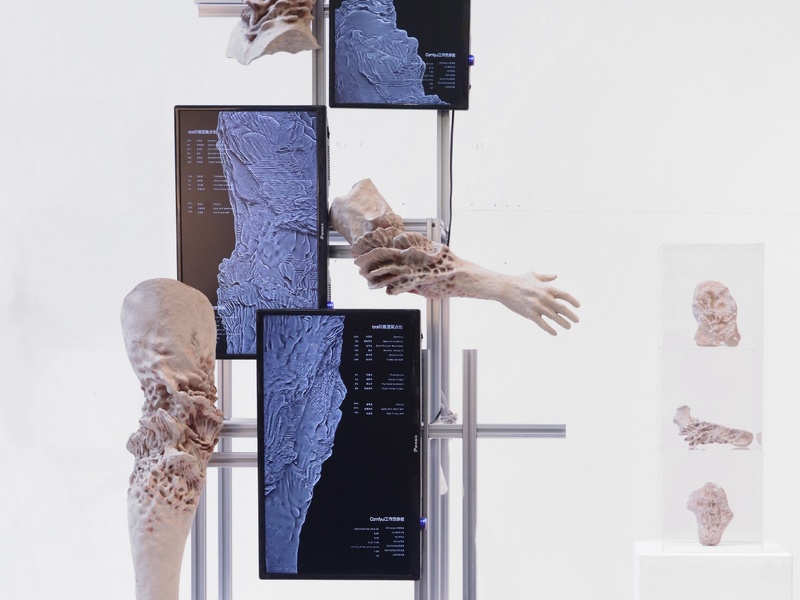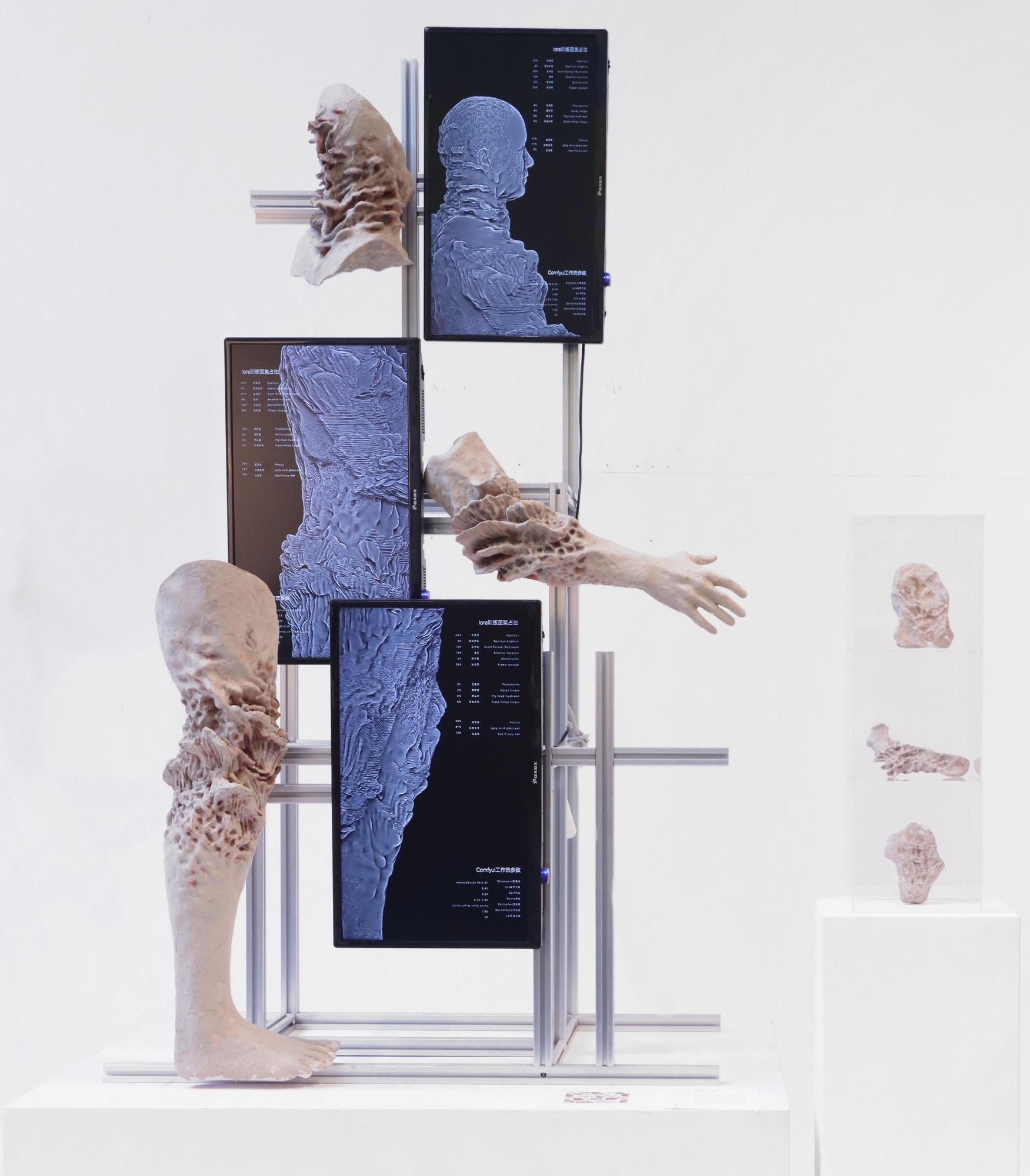
Panoramic Booth View

Fossil display
Detail carving display
Detail carving display
Detail carving display
Show video
Is it possible to evolve a body structure more adapted to the environment through deep symbiosis with non-human life in an ecological crisis? The work explores the possibility of future human-fungal symbiosis by using generative antagonistic networks, extracting different fungal types, referring to the advantages of fungal networks in efficient nutrient transfer, decomposition of organic matter and water absorption, and combining the neck, elbow and knee joints of the human body.
The work aims to explore the fuzziness and diversity of human survival boundaries under the scientific and technological progress and ecological crisis, and to put forward a profound thinking on the future survival mode and the definition of life through the morphological evolution of "person.
The future archaeological team found some short-term limb fossils of strange creatures in the quagmire remains thousands of years ago. Archaeologists have inferred that these fossils came from a new species of "fungus" and "human" symbiosis between the 24th and 26th centuries. Due to the sharp rise in global temperature, the earth's ecosystem has undergone fundamental changes. Fungi have mutated and fused with human genes as part of future ecological adaptation, forming a "mushroom".
By using the generative antagonistic network, the work extracts different fungal types, refers to the advantages of the fungal network in efficient nutrient transfer, decomposition of organic matter and water absorption, and combines the neck, elbow and knee joints of the human body to show the exploration of the possibility of symbiosis between human beings and fungi in the future.
we guessed and carved the stump of the mushroom by using the inspiration map generated by the generative adversarial network, presented it by means of 3d printing and treated it with materials such as acrylic and pottery clay.
Through innovative thinking, we have thought about the possibility of symbiosis between human beings and fungi. Based on the concept of Confucian ecological wisdom, through observing and studying natural phenomena (I. e., the growth, reproduction and ecological function of fungi, etc.), we have achieved a deep understanding of the world of fungi, considered the possibility of symbiosis between human beings and fungi, and called on people to reflect and redefine their position and existence in the earth's nature in a certain sense, it also provides a "possibility" for the new survival ethics of human beings in the face of extreme high temperature environment ". Reflect the harmonious relationship between man and nature, man and fungi.
Good judges, teachers! We are students from the Institute of Intelligent Creation of Art and Technology, Grade 22, China Academy of Art. We created this work by imagining the possible future of symbiosis between bacteria and people.












